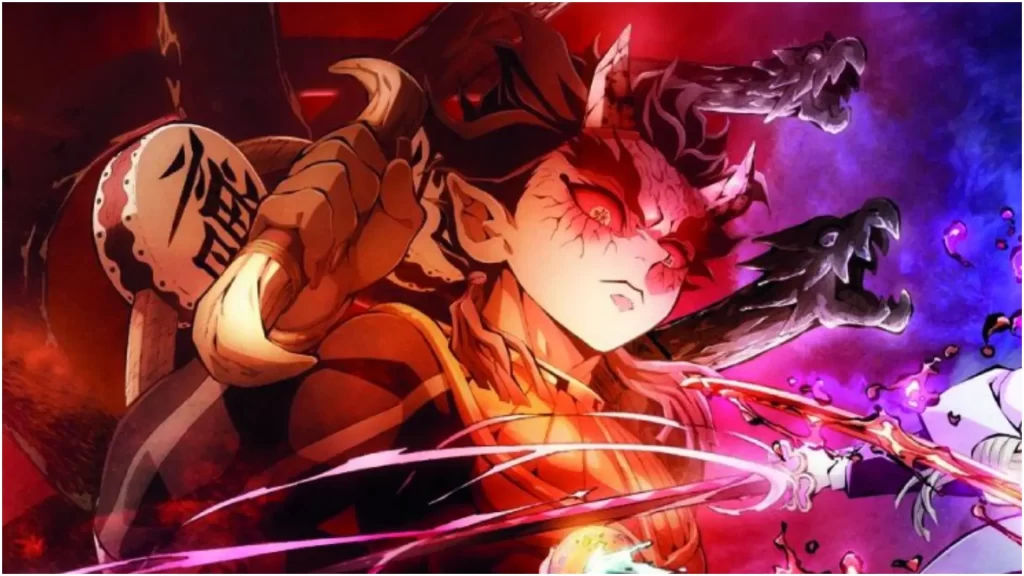Zohakuten Saga Begins: The gripping saga of Demon Slayer’s Swordsmith Village Arc thrills its audience with intense confrontations between demon slayers and two Upper Moons. Among them, Upper Moon Four Hantengu stands as a formidable adversary, birthing formidable clones, each possessing unique abilities.
As the climactic moments of Demon Slayer Season 3 unfold, viewers get an intimate understanding of the formidable prowess of Upper Moon Four Hantengu. Even after Muichiro’s victory over Gyokko, Hantengo continues to be a tough challenge for the demon slayers.
In battle, Hantengu spawns a myriad of clones, each echoing a different emotion. His seven distinct personalities – Hantengu, Sekido, Karaku, Aizetsu, Urogi, Zohakuten, and Urami, each bring their unique strength to the battlefield.
These clones, born of an Upper Moon Four, are not so easily vanquished. The combined might of Tanjiro, Genya, Mitsuri, and Nezuko is needed to triumph over this daunting adversary. Let’s delve deeper into deciphering the various forms of Hantengu in Demon Slayer.
Hantengu: The Embodiment of Fear
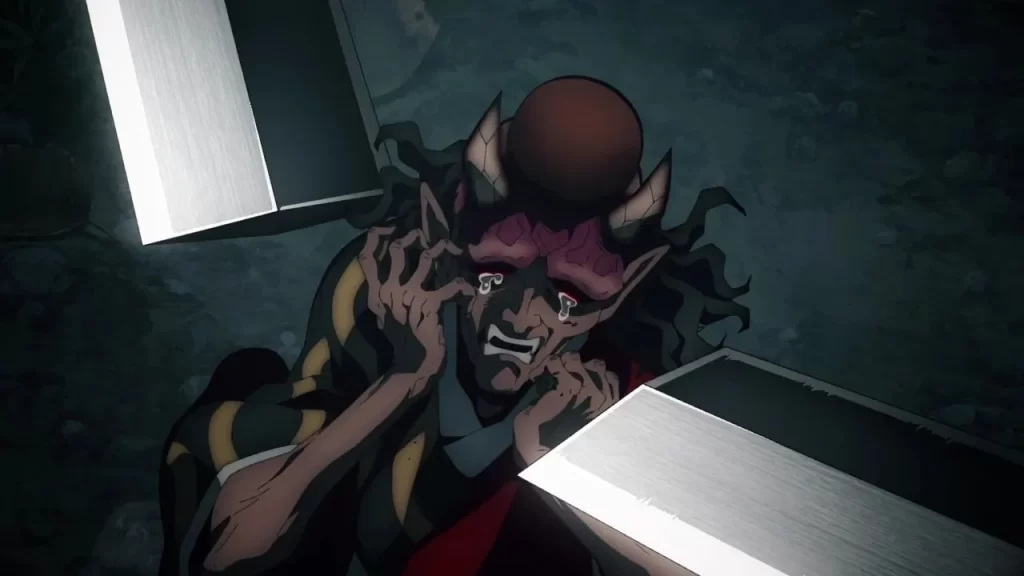
Upper Moon Hantengu’s primary form resonates with palpable fear and anxiety. His tendencies towards paranoia, terror, and delusions are triggered by even the most minor events.
Through his Blood Demon Art, Hantengu creates younger versions of himself, each representing different emotions. Each clone, with its distinctive appearance, skill set, and weaponry, possess a minimum of Upper-Rank caliber strength.
Upon Hantengu’s head severing, his Blood Demon Art activates, leading to the creation of two clones personifying rage and joy.
Sekido: Anger Personified (Zohakuten)
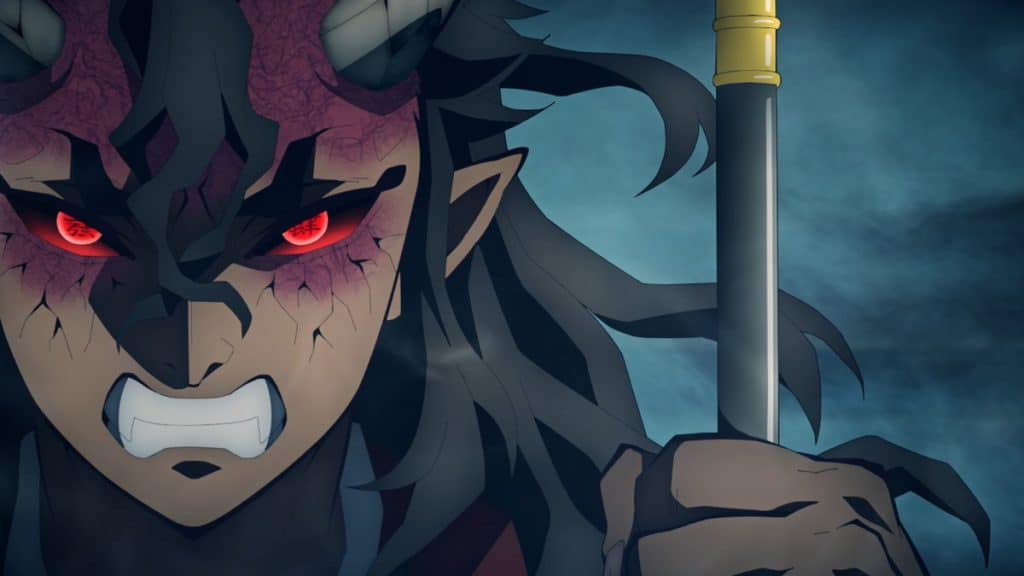
Sekido, the embodiment of Hantengu’s rage, incessantly exhibits frustration, irritation, and wrath, even towards his clone companions. Any failure on their part sparks his fury.
His Blood Demon Art, “Electricity Generation,” allows Sekido to generate paralyzing electricity that flashes in blue and red. A mere thrust of his Khakkhara into the ground activates this power. Sekido has the ability to amalgamate with Karaku, Urogi, and Aizetsu, resulting in the creation of Zohakuten.
Karaku: The Symbol of Joy
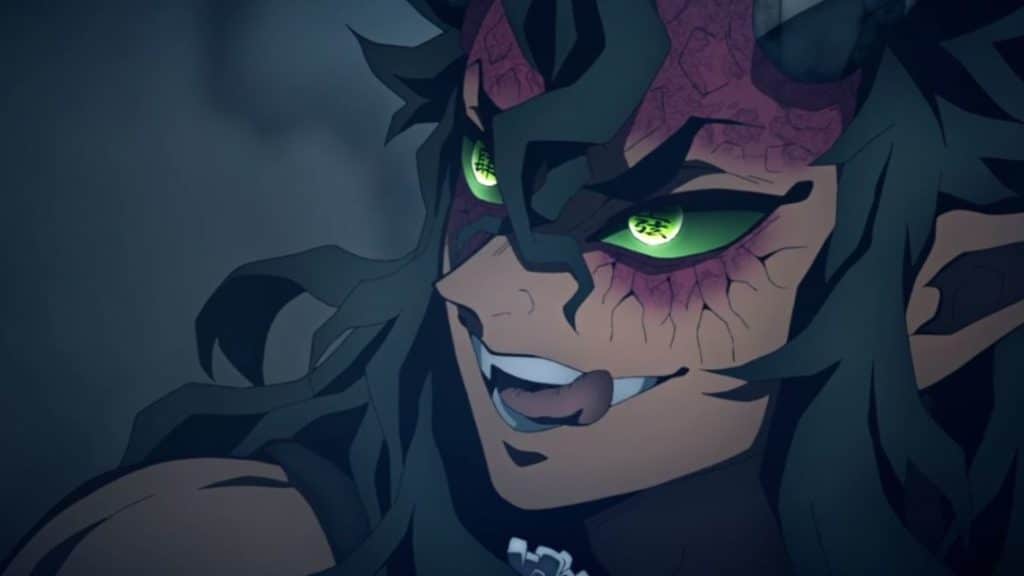
Karaku, an embodiment of Hantengu’s pleasure, exhibits a carefree and jovial demeanor. His Blood Demon Art, “Wind Blasts,” enables him to conjure strong wind gusts, disrupting his opponent’s movements like a tornado. Nezuko, however, discovers that this power can be turned against him.
Aizetsu: The Essence of Grief
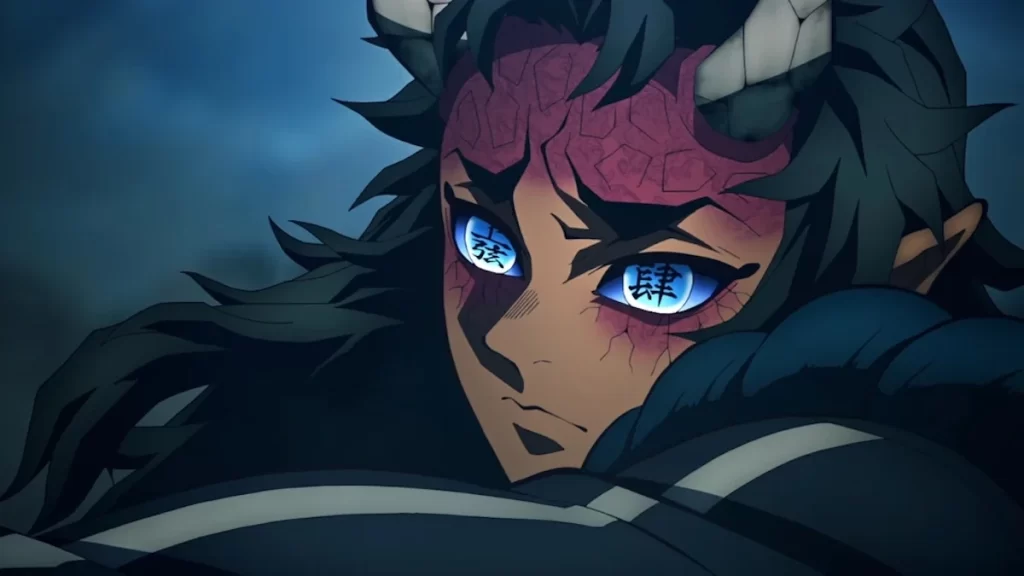
Portraying Hantengu’s sorrow, Aizetsu constantly emanates sadness and negativity. He stands out for his calmness as he analyses his opponents and strategizes rather than engaging in squabbles with other clones.
Urogi: A Joyful Mirage
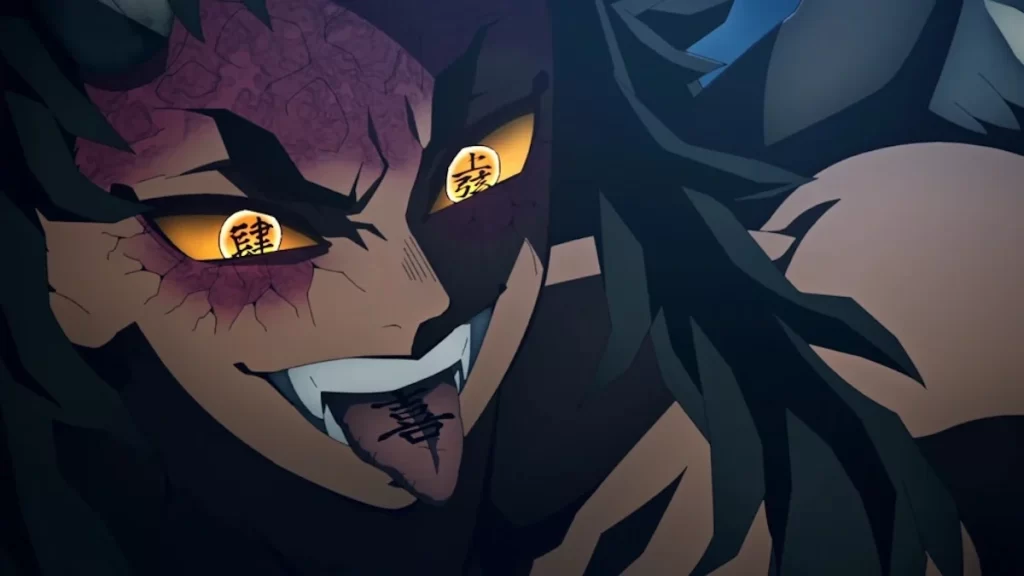
Urogi, embodying Hantengu’s joy, portrays the combat as a game, sharing a similar perspective with Karaku. His unique physiology allows him to possess bird-like traits, including formidable wings and sharp talons.
Zohakuten: The Incarnation of Hatred
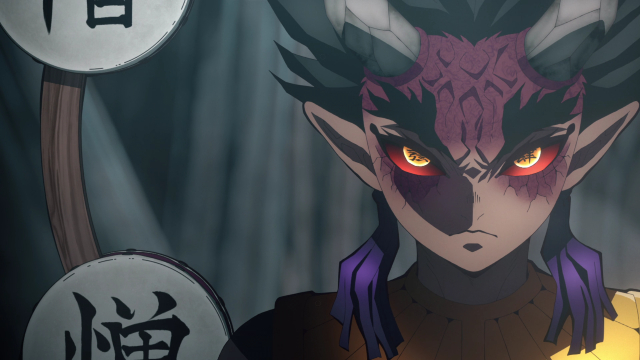
Zohakuten, the offspring of Sekido consuming the other clones, is the most potent among all of Hantengu’s clones. His primary Blood Demon Art, “Wood Manipulation,” gives him the power to manipulate wood, which he employs for both close and long-range combat.
Urami: The Paragon of Resentment
Urami, manifesting Hantengu’s resentment, is delusional, often considering himself weak and innocent while blaming others for not acknowledging his innocence. His Blood Demon Art, “Ability Combination,” allows him to leverage the powers of the other clones, enhancing his combat capabilities.
Hantengu: A Closer Look at the Embodiment of Fear
Hantengu’s primary form, which amplifies his fearful and anxious demeanor, is an alarming sight. His heightened paranoia and terror are triggered by trivial events, showing how his mind is locked in a state of constant fright.
Using his unique Blood Demon Art, Hantengu fabricates younger versions of himself. These clones are designed to embody various emotions. They come with distinctive appearances, skill sets, and weapons.
Each of these clones boasts a strength at least equal to that of an Upper-Rank caliber. This form adds a critical strategic dimension to Hantengu’s combat style, complicating the task for the demon slayers.
Sekido: Zohakuten – A Deeper Analysis of Anger Personified
Sekido, a manifestation of Hantengu’s anger, introduces a unique facet to this ensemble of clones. Notably, his volatile emotions extend to his clone companions, demonstrating the volatile and explosive nature of his rage.
His Blood Demon Art, “Electricity Generation,” proves to be a formidable weapon in Sekido’s arsenal. The powerful electric shocks it generates can immobilize even mid-air opponents, rendering them unconscious within seconds. A formidable strategist, Sekido can absorb Karaku, Urogi, and Aizetsu, culminating in the creation of the extremely powerful Zohakuten.
Karaku: Delving into the Symbol of Joy
Karaku, representing Hantengu’s pleasure, brings an element of levity to the battle. With a breezy and easygoing demeanor, he paints the battlefield with hues of light-heartedness, viewing the entire conflict more as a game than a life-threatening encounter.
Karaku’s Blood Demon Art, “Wind Blasts,” allows him to manipulate the battlefield conditions significantly. By summoning powerful gusts of wind, he makes it challenging for opponents to maintain their footing and execute their moves precisely. However, Nezuko’s strategic insight reveals that this power can also be exploited, adding a fascinating twist to the confrontation.
Aizetsu: Gleaning the Essence of Grief
Aizetsu’s presence on the battlefield offers an intriguing contrast. The embodiment of Hantengu’s sorrow, Aizetsu, is noticeably calm and composed. Instead of engaging in the heated exchanges common among the clones, he devotes his energy to analyzing his opponents, developing intricate strategies.
Urogi: Decoding the Joyful Mirage
Urogi, another clone embodying Hantengu’s joy, shares Karaku’s perspective of the battle as a form of amusement. This clone’s bird-like features and capabilities lend a unique dimension to the confrontation.
Urogi’s physiology equips him with formidable weapons – his massive wings allow swift aerial movements, and his sharp talons pose a significant threat to the demon slayers. His Blood Demon Art, “Sonic Scream,” further strengthens his combat capabilities, adding a layer of sound attack to his arsenal.
Zohakuten: The Incarnation of Hatred Unveiled
The most potent among Hantengu’s clones, Zohakuten, is the result of Sekido absorbing the other clones. As such, he embodies the collective powers and characteristics of the other forms, making him an incredibly powerful adversary.
Zohakuten’s principal Blood Demon Art, “Wood Manipulation,” allows him to control the surrounding flora. The flexibility of this power, combined with his high-level strategic thinking, makes Zohakuten an adversary who keeps the demon slayers constantly on their toes.
Urami: Interpreting the Paragon of Resentment
Urami, the clone embodying Hantengu’s resentment, projects himself as a victim. This form constantly blames others for not recognizing his innocence, adding a psychological dimension to the confrontation.
His Blood Demon Art, “Ability Combination,” enables Urami to tap into the other clones’ powers, leading to a strategic enhancement of his combat capabilities. This gives Urami the unique ability to surprise his opponents by suddenly deploying unexpected powers, keeping the demon slayers on high alert.
Zohakuten: Strategic Depth
Zohakuten, the embodiment of hatred in the story of Demon Slayer, provides a stern test to the abilities of the demon slayers. His intelligence and keen sense of strategy, combined with his broad range of powers, ensures that the protagonists need to be at their best to overcome this formidable adversary.
In addition to his unique Blood Demon Art, Zohakuten can harness the abilities of the other clones. This ability to use a wide array of powers provides a significant advantage to Zohakuten in battle, making him a fearsome opponent.
Urami: A Complex Mix of Resentment and Hypocrisy
Urami, representing Upper Moon Hantengu’s resentment, is a character layered with complexity. He constantly claims innocence while blaming others, primarily Tanjiro, for their perceived failure to see his innocence. This self-contradicting stance introduces a psychological layer to the confrontations involving Urami, adding an intriguing twist to the storyline.
Interestingly, Urami’s resentment extends to his self-perception. He despises being held responsible for crimes that he believes he didn’t commit. This deeply ingrained resentment enables him to tap into enormous power, significantly enhancing his combat capabilities.
Zohakuten: The Intricate Interplay of Emotions
As the narrative of Demon Slayer unfolds, the distinct personalities of Hantengu’s clones become apparent. Each clone, a personification of a particular emotion, introduces unique dimensions to the storyline, adding layers of complexity and intrigue.
The story’s central theme revolves around the demons and their relentless pursuit of power. As the plot unravels, the Demon Slayers find themselves faced with formidable opponents. The array of powers and personalities exhibited by Hantengu’s clones presents a fascinating exploration of the interplay between emotions and power.
In the world of Demon Slayer, power is not merely about physical strength but also extends to emotional and psychological dimensions. The saga of Hantengu and his various forms exemplifies this intriguing interplay, providing readers with an engaging journey through a labyrinth of power, emotion, and strategy.
Demon Slayer’s creators have crafted a unique narrative tapestry by merging elements of fantasy and emotional complexity. This rich, layered narrative will continue to fascinate readers, proving once again that the series is much more than a tale of good versus evil – it is an exploration of the intricate dynamics that govern power, emotion, and conflict.
